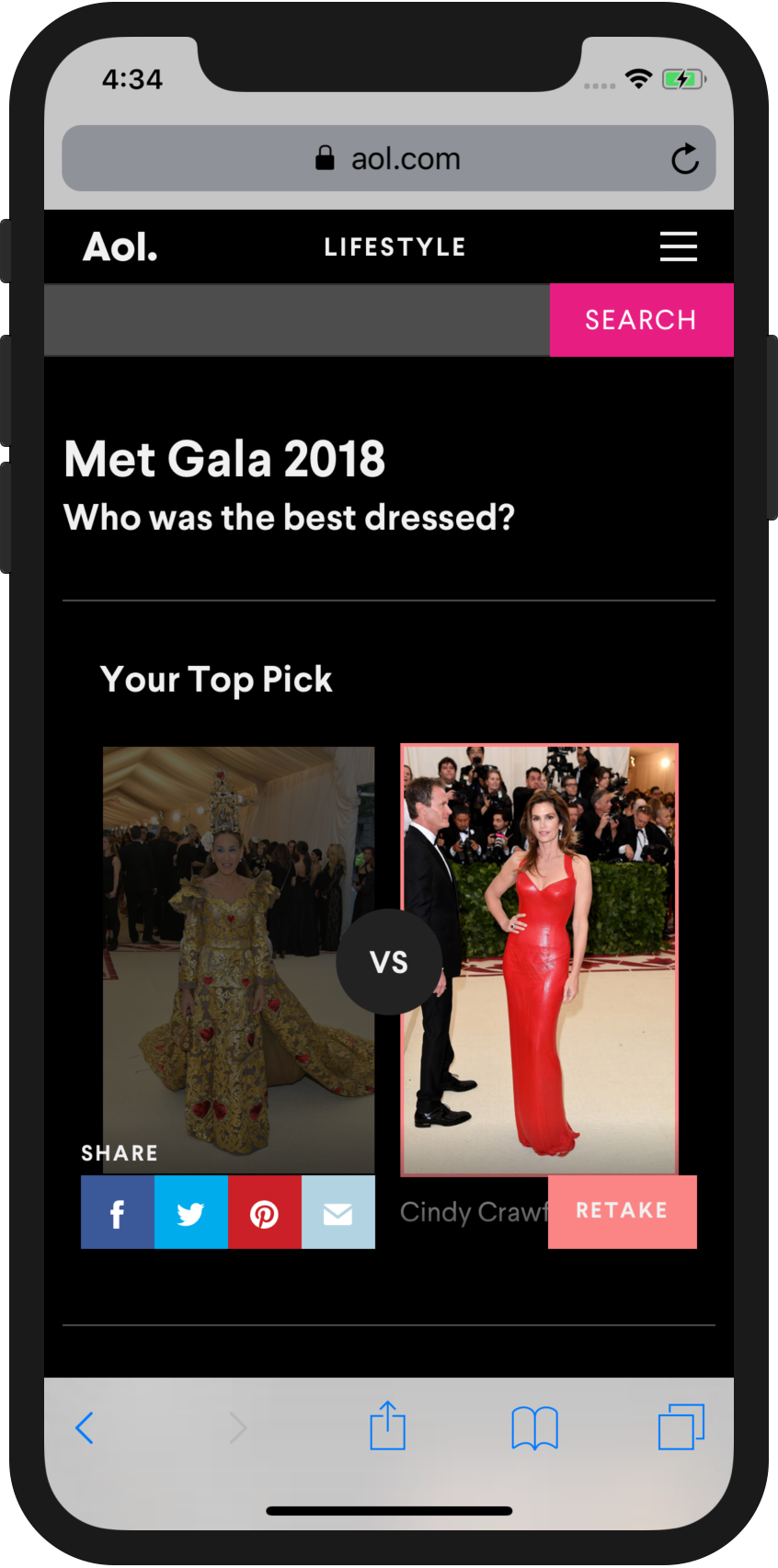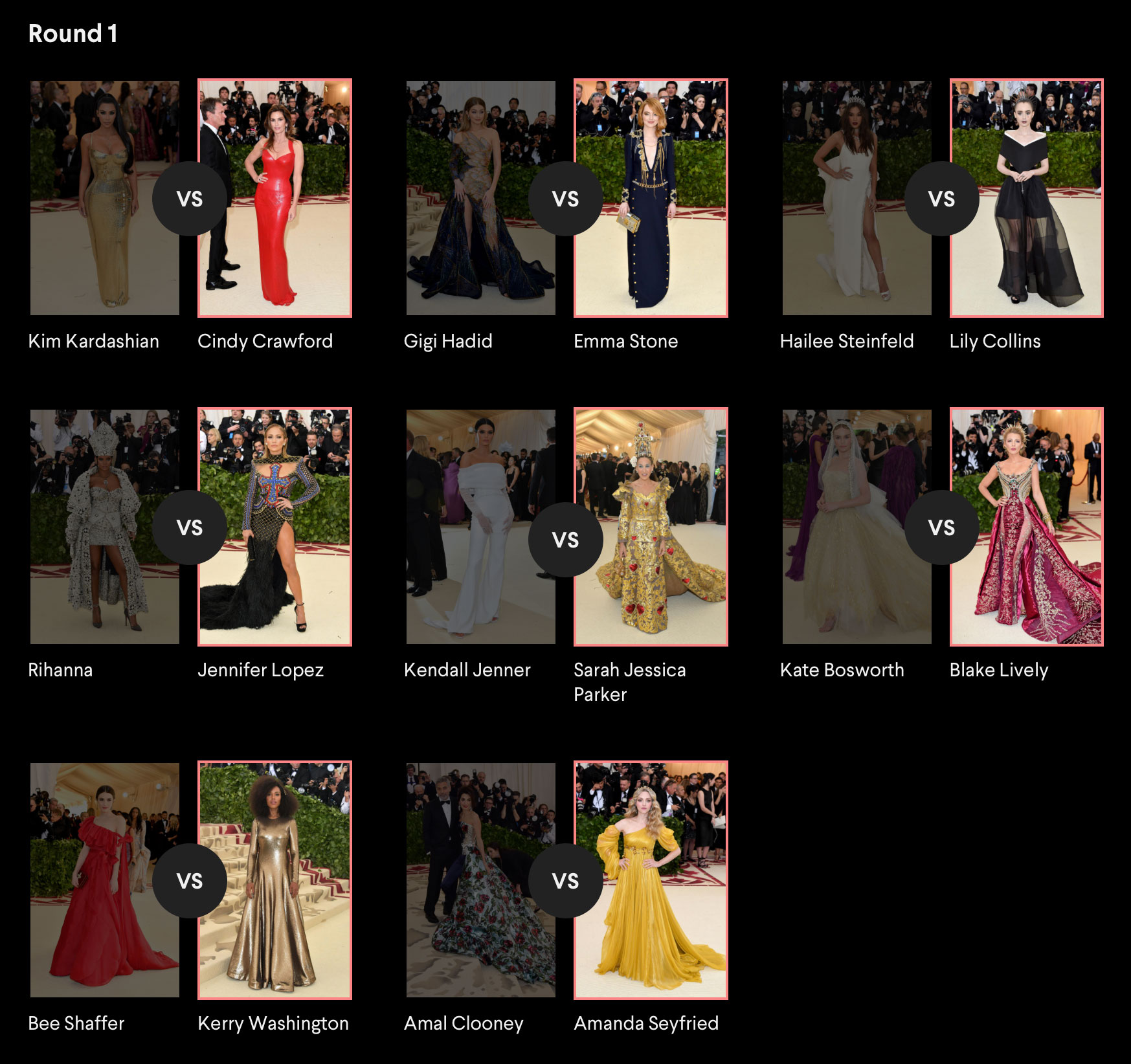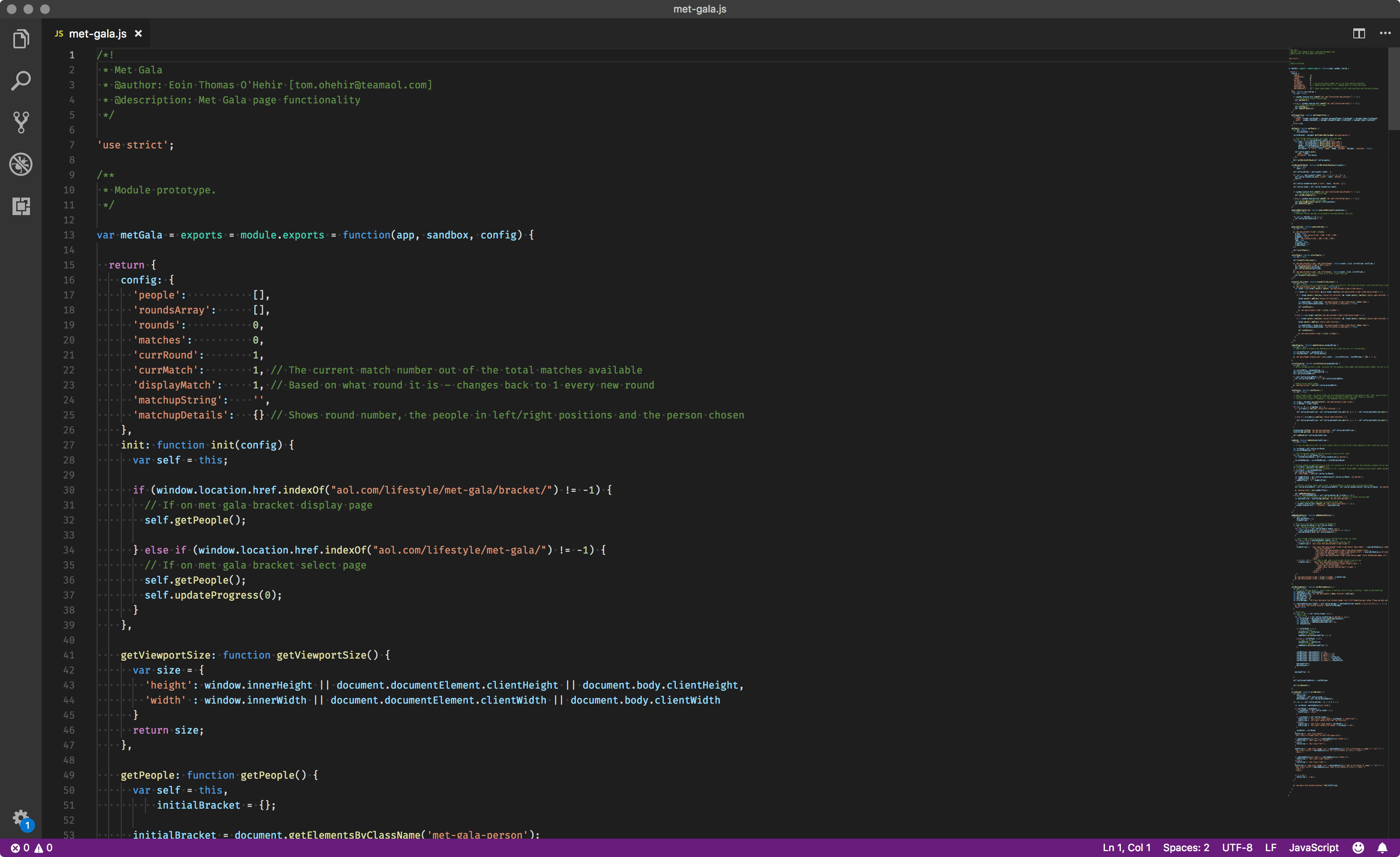Language and Time Limitations
Executing the bracket system in the way I implemented it meant I needed to precisely manipulate arrays. Initially, I wanted to write this system server-side, so that the user wasn’t forced to wait for the JavaScript on the page to load before seeing their results.
However, the server-side language used in our site framework was Twig, which is a PHP-based language specifically made for templating. The only functions available to me to manipulate arrays were merge(), which merges two arrays into one array, and slice(), which extracts a sequence of a sequence, mapping, or string.
Functions like push(), pop(), or splice(), available in other languages, were not available in Twig, making array manipulation frustrating to deal with.
It ended up taking more time executing the back-end implementation than it would have taken me by simply writing this on the client-side in JavaScript, so with a deadline looming, I scrapped my Twig code and rewrote the implementation in JavaScript. Realizing the load time was minimal and the user needed JavaScript to do the bracket anyways, this was the best choice for the time I had available to me.


